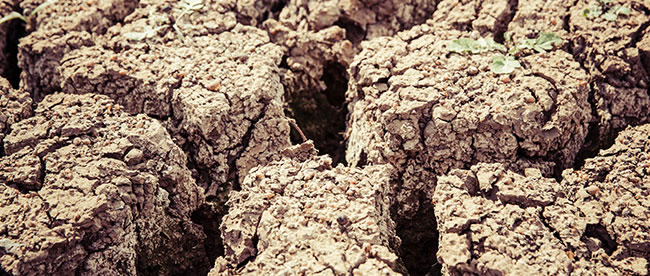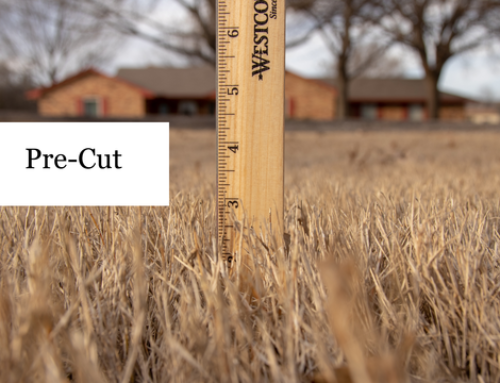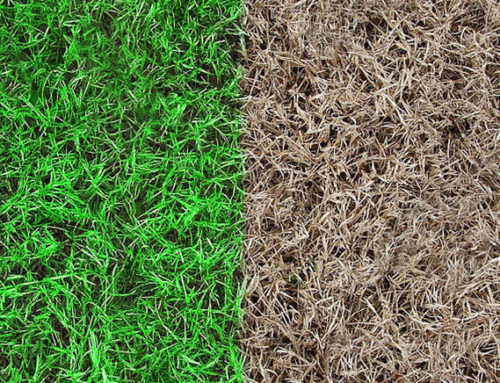For those of you new to North Texas, you may have noticed the majority of the lawns in the area have 1 of 3 grass types: Bermuda, St. Augustine, and Zoysia. In this blog, we’ll elaborate on how Bermuda and St. Augustine grasses differ in plant structure and how their respective structures handle the high heat and drought conditions of North Texas.
Native Texans are well aware that most years have very brief Spring and Fall seasons, so temperatures can swing dramatically between hot and cold within a few days to a few weeks. These harsh fluctuations can be problematic for homeowners when they are considering how much water is needed for their lawns; however, once Summer is on, it’s on.
The amount of rainfall throughout the summer determines how severely the grass will be impacted by the heat. Sparse rainfall, especially, will expose the differences in the watering requirements of warm-season turf grasses. Bermuda and St. Augustine turf grasses are similar in that they both need water to stay green and healthy throughout the summer. The difference is how the water is being stored in the plant itself.
The Structure of Bermuda Grass and St. Augustine Grass
 Bermuda grass is an overall compact grass with a high metabolism rate. Due to its nature, its roots and visible appearance above the soil are “skinnier” when compared to other grass types. This inherently provides a lower ability for Bermuda to retain moisture for a longer period of time. With its faster metabolism and smaller root structure, visible heat stress will be seen more quickly in Bermuda than St. Augustine, even under the same watering and temperature conditions.
Bermuda grass is an overall compact grass with a high metabolism rate. Due to its nature, its roots and visible appearance above the soil are “skinnier” when compared to other grass types. This inherently provides a lower ability for Bermuda to retain moisture for a longer period of time. With its faster metabolism and smaller root structure, visible heat stress will be seen more quickly in Bermuda than St. Augustine, even under the same watering and temperature conditions.
 Conversely, St. Augustine grass grows from a large “tap-root”. The stolons of the grass, or its runners, are larger than those of Bermuda grass and can retain moisture for a longer period of time. Adversely, damage to a St Augustine runner, where water is being retained, can have a greater, visible effect on the general area of turf due to its larger plant size.
Conversely, St. Augustine grass grows from a large “tap-root”. The stolons of the grass, or its runners, are larger than those of Bermuda grass and can retain moisture for a longer period of time. Adversely, damage to a St Augustine runner, where water is being retained, can have a greater, visible effect on the general area of turf due to its larger plant size.
As opposed to the more compact and localized structure of Bermuda grass, damage to an individual plant is not as apparent as with St. Augustine grass. What becomes apparent is the speed of decline for the Bermuda. Although an individual Bermuda plant’s health is not as noticeable as St. Augustine grass, its metabolism and shallow root structure creates a more rapid decline under drought conditions; in other words, drought stress is seen more quickly.
How to Water Bermuda and St. Augustine Grass in Summer
Overall, Bermuda grass should be watered more frequently in shorter bursts during the summer. St. Augustine grass can be watered longer during one cycle. The roots of St. Augustine grass can dig deeper into the soil for water while Bermuda’s shallow root structure cannot pull from deeper soil moisture.
If you are starting to notice any amount of heat stress in your Bermuda grass, begin staggering your watering cycles. For example, water for 12 minutes in the early morning then 12 minutes again in the evening, instead of one cycle of 24 minutes.
If you are seeing signs of heat stress in your St Augustine grass, you may still want to stagger the cycles, but sequence them back-to-back. For example, water for 12 minutes in the early morning then water for an additional 12 minutes directly afterward.
*The above times are for example purpose only. Your lawn may require more or less water, based on temperatures, soil density, rainfall, or property location.*
In the end, don’t be discouraged when you see that your neighbor’s St. Augustine grass is greener than your Bermuda grass. With a little more water and by changing up your watering frequency, your lawn can be just as green and lush.
Further Reading: Is My Yard Dying?! – Drought Stress And Your Lawn






